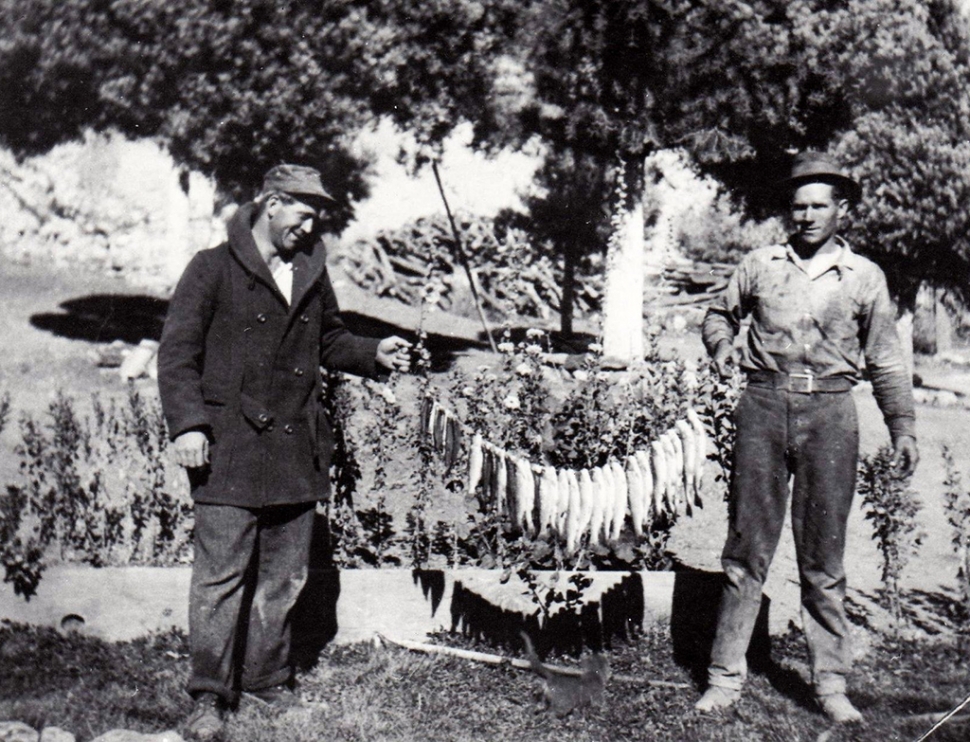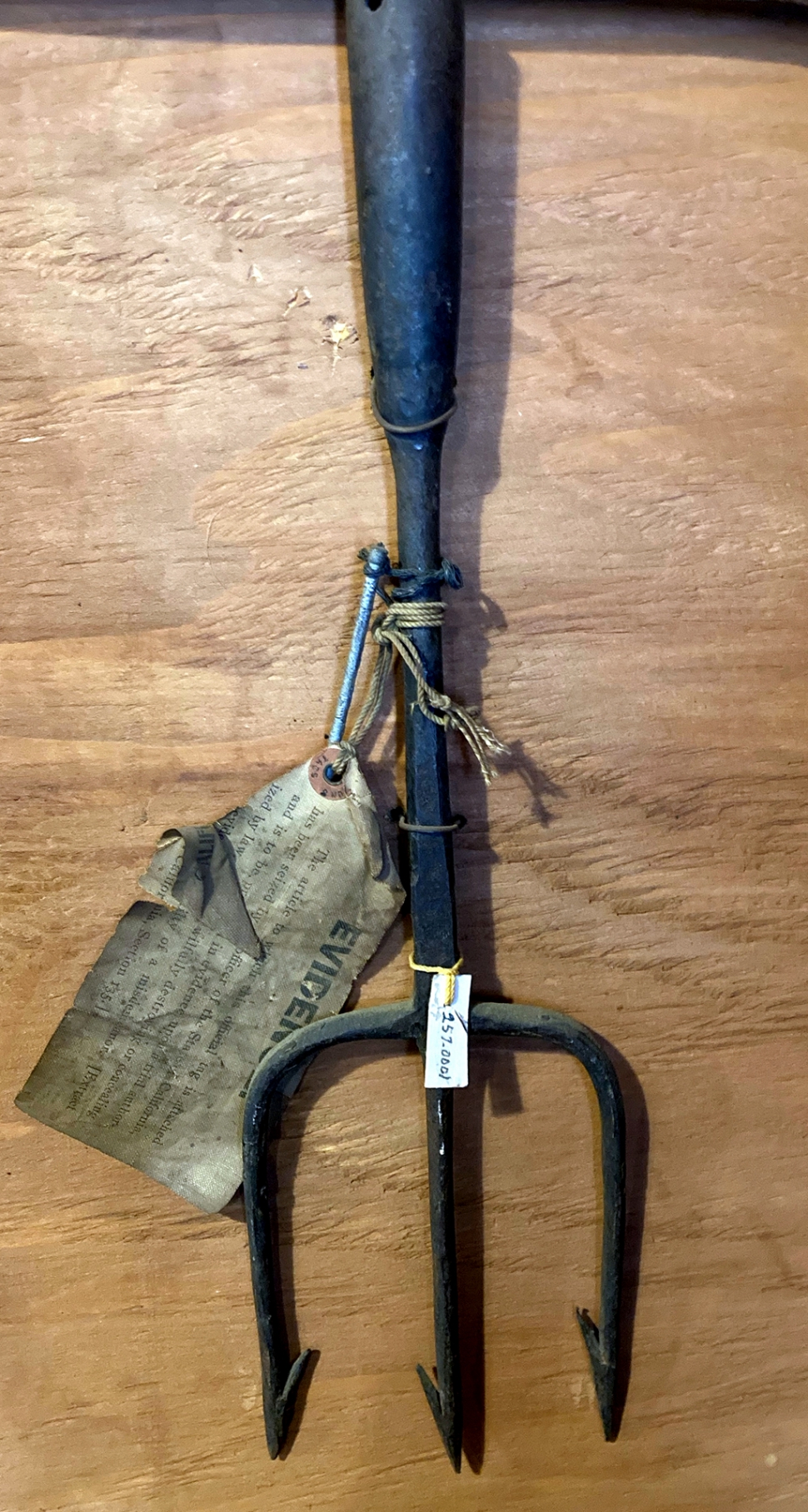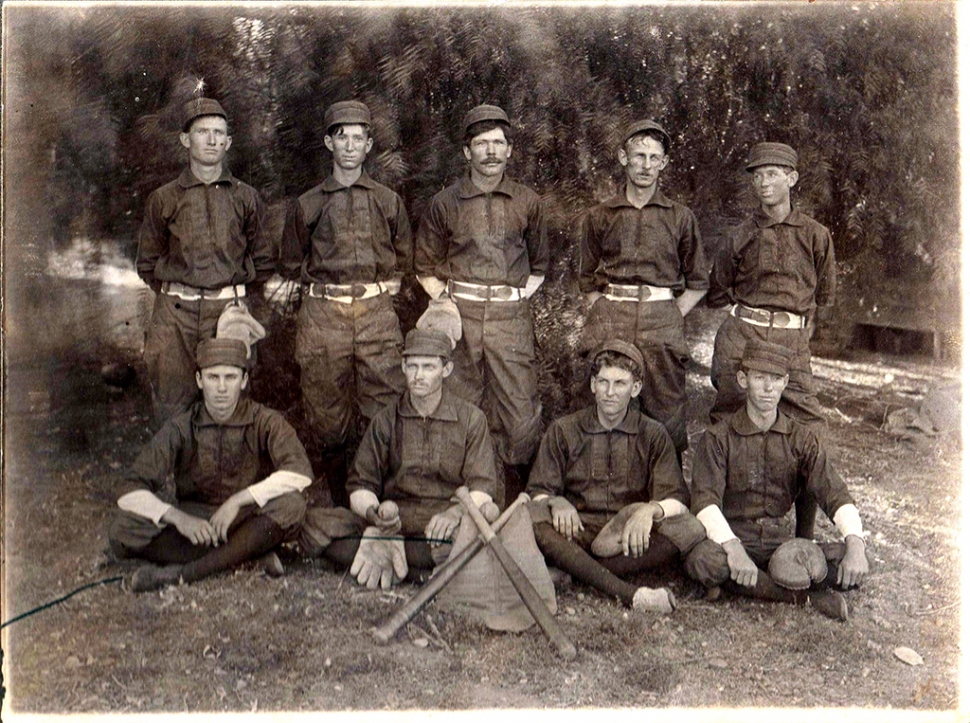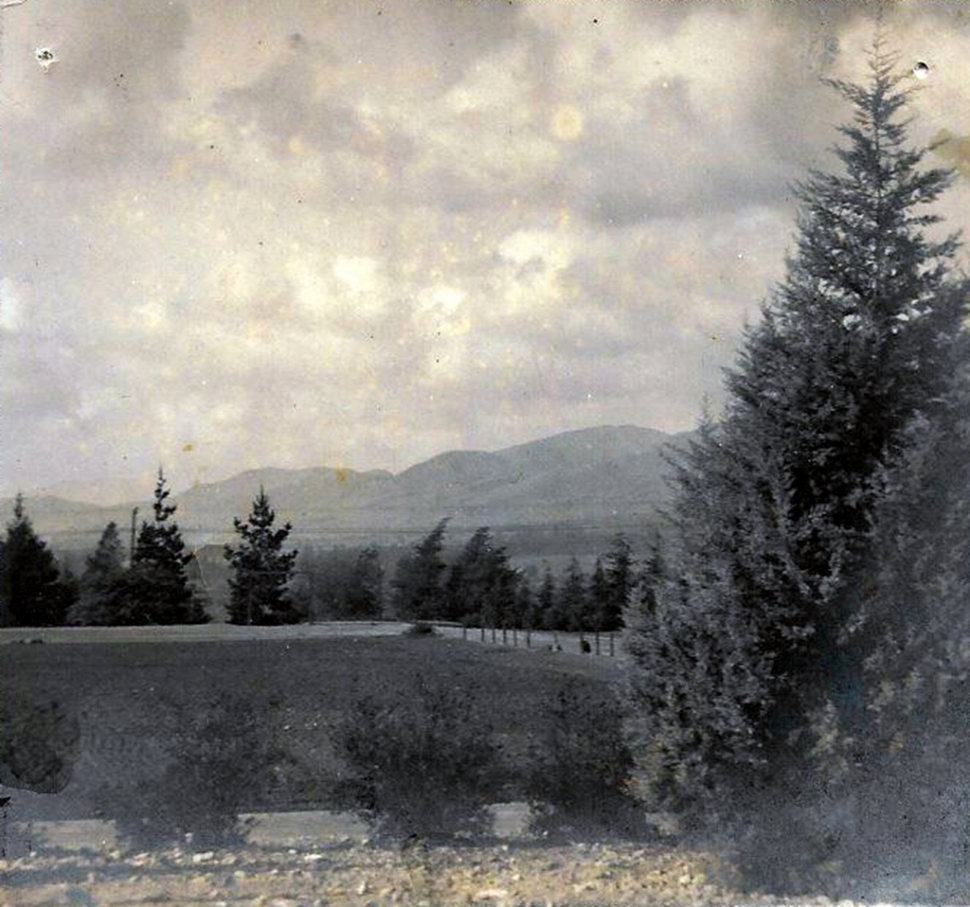|
“Remembered Trivia” An Anecdotal History of Fillmore, California
 (Above) a fish catch circa 1920 with (at right) Charlie Brown. Photos courtesy Fillmore Historical Museum. By Gazette Staff Writers — Wednesday, January 19th, 2022
 A fishing spear used by Buck Atmore and seized by Fish and Game authorities.  The Fillmore baseball team circa 1911.  The Fillmore High School football field circa 1927, which ran east and west next to First Street, and was surrounded by Cedar trees. Excerpted from “An Anecdotal History of Fillmore, California” compiled by Ken Fine. Copies are available at the Museum Gift Shop. “Remembered Trivia” The Sespe River was noted all over the southland for its native trout and steelhead. On May 1st, which was the opening of trout season, Fillmore got pretty crowded. No rooms left to rent, no empty stools in the restaurants and you had to “take your own rock to stand on.” The limit was 25 fish. Steelhead were not too interested in biting, but most everyone had a spear of some kind. It was illegal, but locals figured they had to catch you. I’ve seen my grandfather, Mose Fine, and older brother, Westley, spear them. If it was a pretty big one, it was pretty easy to get wet. None of the real sportsmen of Fillmore ever took a job where the opening days of fishing and deer hunting weren’t legal holidays. If they did, they just quit the job. Pole Creek and a few of the oil properties were the only places you couldn’t hunt. Packing into the back country, Alamo Mountain and the head of Piru Creek on the other side of Alamo, were all favorite hunting spots. For quail hunting, you just went to the foothills most anyplace in the valley and started up the mountains. Limits of 10 were common. Dove hunting was enjoyed at Sprague’s pasture on the land owned by Jack Beekman’s uncle. You reached it by going up Grand Avenue to Ira Case’s place and turning left for about a mile. Certain spots on rivers were good too. The reservoirs over in Moorpark were hot spots in the evenings when the doves came in to water. Ducks were hunted on the Santa Clara River. Rancho Sespe built ponds below the ranch headquarters but they weren’t open to the public. The Basolos diverted part of the Santa Clara into a pond below their ranch for hunting by invitation only. The dikes around Point Mugu’s Duck Club was another popular spot. All the avid fishermen and hunters had no trouble with gates in the hills, as the all carried a duplicate key to the government locks. Charlie Law, his studio was at 114 First St, [?] was ranked as the third best taxidermist in the United States. One at Abercrombie and Fitch in New York was #1 and one in Denver was #2. I read his rating in a sports magazine but never could find it again for him. At one time, Lawrence Hinckley worked for him. In the 1940’s Charlie mounted a deer head for me for $17 and tanned the hide for $4. I spent many an hour with him. He used to give demonstrations on mounting animals to the Boy Scouts. Telephone lines were completed to Fillmore and Piru, August 12, 1892.In the 1930’s when the telephone office had good looking women operators instead of computers, it paid to listen in on Santa Paula’s long distance calls. Many a gay blade from Fillmore went to Santa Paula to place their calls to someone else’s wife. They did not think about all of Santa Paula’s long distance calls coming to the Fillmore office as Santa Paula had an independent phone company. In 1903 a bad fire destroyed most of the Fillmore business section, including Harmonson’s two-store store on the northwest corner of Central and Main Street was rebuilt as one building. Bowie’s was run by a Scotsman who had a big mustache and always wore a hat. He was a small man who like kids and kept a good supply of cheap candy. It was not uncommon for the first package of cigarettes purchased by underage boys to come from there. Servoss’ barber shop was well patronized. He was an old-timer in Fillmore. His son, Rex, was quite a baseball player in high school. He also held #2 badge in the California Highway Patrol for many years. Bert Halstead’s radio shop at 523 Santa Clara had a full house the night of the Dempsey-Tunney fights when Tunney won the heavyweight crown. The fans spilled out on the street so Burt put a radio out on the sidewalk for the overflow crowd. Ben Klotz, who had a cleaning shop and sold radios, sponsored and pitched for a baseball team. He was a finesse pitcher with a curve, drop, etc. His team’s claim to fame was a win over Pironnes Night Hawks, a pro team from Los Angeles. Albert Fine, first base, Orley Mosbarger, second; Pinky Elsworth, shortstop (My brother said he never threw a straight ball to him, always a curve); and Clarence Mayhew, third base. The high school football field used to run east and west next to First Street. It was surrounded by cedar trees and the west end made a good lovers’ lane. |
